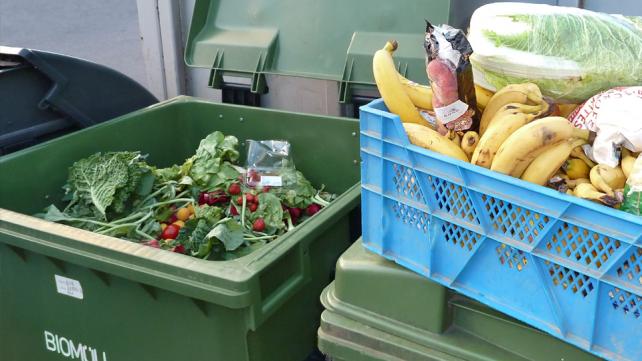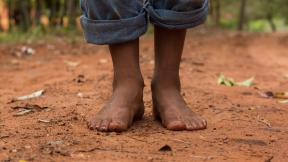
Poverty in America? One of the richest countries in the world?
Yes, poverty is a reality in America, just as it is for millions of other human beings on the planet. According to the US Census Bureau, 35.9 million people live below the poverty line in America, including 12.9 million children.
This is despite abundance of food resources. Almost 100 billion pounds of food is wasted in America each year. 700 million hungry human beings in different parts of the world would have gladly accepted this food.
Here are some statistics on the nature of poverty and the waste of food and money in America.
-In 2004, requests for emergency food assistance increased by an average of 14 percent during the year, according to a 27-city study by the United States Conference of Mayors.
-Also in this study, it was noted that on average, 20 percent of requests for emergency food assistance have gone unmet in 2004.
-According to the Bread for the World Institute 3.5 percent of U.S. households experience hunger. Some people in these households frequently skip meals or eat too little, sometimes going without food for a whole day. 9.6 million people, including 3 million children, live in these homes.
-America's Second Harvest (http://www.secondharvest.org/), the nation's largest network of food banks, reports that 23.3 million people turned to the agencies they serve in 2001, an increase of over 2 million since 1997. Forty percent were from working families.
33 million Americans continue to live in households that did not have an adequate supply of food. Nearly one-third of these households contain adults or children who went hungry at some point in 2000.
U.S. Dept. of Agriculture, March 2002, "Household Food Security in the United States, 2000"
Wasted food in America
-According to America’s Second Harvest, over 41 billion pounds of food have been wasted this year.
-According to a 2004 study from the University of Arizona (UA) in Tucson, on average, American households waste 14 percent of their food purchases.
Fifteen percent of that includes products still within their expiration date but never opened. Timothy Jones, an anthropologist at the UA Bureau of Applied Research in Anthropology who led the study, estimates an average family of four currently tosses out $590 per year, just in meat, fruits, vegetables and grain products.
Nationwide, Jones says, household food waste alone adds up to $43 billion, making it a serious economic problem.
- Official surveys indicate that every year more than 350 billion pounds of edible food is available for human consumption in the United States. Of that total, nearly 100 billion pounds - including fresh vegetables, fruits, milk, and grain products - are lost to waste by retailers, restaurants, and consumers.
-“U.S.-Massive Food Waste & Hunger Side by Side” by Haider Rizvi
-According to a 1997 study by US Department of Agriculture's Economic Research Service (ERS) entitled "Estimating and Addressing America's Food Losses", about 96 billion pounds of food, or more than a quarter of the 356 billion pounds of edible food available for human consumption in the United States, was lost to human use by food retailers, consumers, and foodservice establishments in 1995.
Fresh fruits and vegetables, fluid milk, grain products, and sweeteners (mostly sugar and high-fructose corn syrup) accounted for two-thirds of the losses. 16 billion pounds of milk and 14 billion pounds of grain products are also included in this loss.
Food that could have gone to millions
According to the US Department of Agriculture, up to one-fifth of America's food goes to waste each year, with an estimated 130 pounds of food per person ending up in landfills. The annual value of this lost food is estimated at around $31 billion But the real story is that roughly 49 million people could have been fed by those lost resources. (For your persona jihad against wastage, see A Citizen's Guide to Food Recovery
(The figures below are 1998 figures)
- Proportion of Americans living below the poverty level: 12.7 percent (34.5 million people)
- The average poverty threshold for a family of four: $16,660 in annual income
- The average poverty threshold for a family ofthree: $13,003 in annual income
- Poverty rate for metropolitan areas: 12.3 percent
- Poverty rate forthose living inside central cities: 18.5 percent
- Poverty rate for those living in the suburbs: 8.7 percent
- Percentage and number of poor children: 18.9 percent (13.5 million)
- Children make up 39 percent of the poor and 26 percent of the total population.
- The poverty rate for children is higher than for any other age group.
Child poverty:
- -for children under age 6 living in families with a female householder and no husband present: 54.8 percent
- -for children under age 6 in married-couple families: 10.1 percent
- Poverty rate for African Americans: 26.1 percent
- Poverty rate for Asians and Pacific Islanders: 12.5 percent
- Poverty rate for Hispanics of any race: 25.6 percent
- Poverty rate fornon-Hispanic whites: 8.2 percent
Photo Attribution: http://commons.wikimedia.org/wiki/File:Recovering_wasted_food.JPG








Comments
this article had lots of information and good statistics
Location
This article is very close in perspective of a world citizen type of view and retains the ideals that as we are as lucky as we are to have the freedoms we have in the US that we have a responsibility to the rest of the world and the less fortunate
Location
Oops,There went Florida in 2000 and fiscal responsibility,and the surplus in 2001 and on!
Location
This is obviously written from a democratic perspective, what do you mean billions of dollars excess? Did you forget about national debt we spend enough as it is on social security
Location
Not only is the information informative but also reflective in such a way that we should all reflect on the existing situation. Whether we really do have the right to waste food or are we just ignorant to the situations around us?
Location
Very informative
Location
Pages
Add new comment